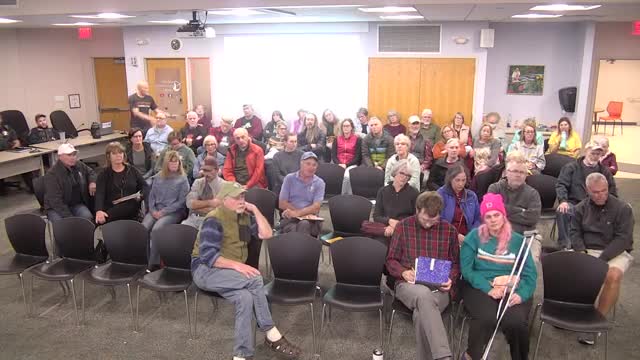Residents demand answers on rising taxes and affordability crisis
October 24, 2024 | Monona, Dane County, Wisconsin
This article was created by AI summarizing key points discussed. AI makes mistakes, so for full details and context, please refer to the video of the full meeting. Please report any errors so we can fix them. Report an error »

During a recent government meeting, officials discussed various financial matters impacting the community, including capital costs, user fees for public facilities, and the implications of an upcoming referendum.
One key topic was the distinction between capital costs and operating budgets. Officials clarified that while capital costs appear on tax bills, they do not directly affect the operating budget discussions currently underway. The conversation also touched on the San Damiano master plan, with the majority of its funding sourced from private entities, excluding the property purchase.
The discussion shifted to user fees for public amenities, particularly swimming pools. Officials expressed a desire to balance the financial burden between residents and non-residents, suggesting that a wheel tax could help alleviate costs for local taxpayers. They acknowledged the challenge of implementing a fair fee structure that maintains accessibility for all community members, especially in light of examples from neighboring areas where pool passes have reached exorbitant prices.
The meeting also addressed the potential failure of an upcoming referendum. Officials noted that if the referendum does not pass, the next opportunity to present a revised proposal would be in the spring of 2025, with implementation not possible until 2027. This timeline raises concerns about managing budgetary gaps in the interim.
Tensions escalated when a resident expressed frustration over rising property taxes and the perceived lack of support for seniors on fixed incomes. The mayor responded by emphasizing the legal constraints surrounding tax rates, which prohibit differential rates based on age or income. The exchange highlighted the community's anxiety over financial pressures and the challenges faced by local government in addressing these concerns.
Overall, the meeting underscored the complexities of municipal budgeting and the need for transparent communication with residents about financial decisions and their implications.
One key topic was the distinction between capital costs and operating budgets. Officials clarified that while capital costs appear on tax bills, they do not directly affect the operating budget discussions currently underway. The conversation also touched on the San Damiano master plan, with the majority of its funding sourced from private entities, excluding the property purchase.
The discussion shifted to user fees for public amenities, particularly swimming pools. Officials expressed a desire to balance the financial burden between residents and non-residents, suggesting that a wheel tax could help alleviate costs for local taxpayers. They acknowledged the challenge of implementing a fair fee structure that maintains accessibility for all community members, especially in light of examples from neighboring areas where pool passes have reached exorbitant prices.
The meeting also addressed the potential failure of an upcoming referendum. Officials noted that if the referendum does not pass, the next opportunity to present a revised proposal would be in the spring of 2025, with implementation not possible until 2027. This timeline raises concerns about managing budgetary gaps in the interim.
Tensions escalated when a resident expressed frustration over rising property taxes and the perceived lack of support for seniors on fixed incomes. The mayor responded by emphasizing the legal constraints surrounding tax rates, which prohibit differential rates based on age or income. The exchange highlighted the community's anxiety over financial pressures and the challenges faced by local government in addressing these concerns.
Overall, the meeting underscored the complexities of municipal budgeting and the need for transparent communication with residents about financial decisions and their implications.
View full meeting
This article is based on a recent meeting—watch the full video and explore the complete transcript for deeper insights into the discussion.
View full meeting
